A wall-mounted fiber optic distribution box (FODB) is a passive fiber optic component that is used to terminate and distribute fiber optic cables. It is typically mounted on a wall, and it provides a protected environment for splicing and connecting fiber optic cables.
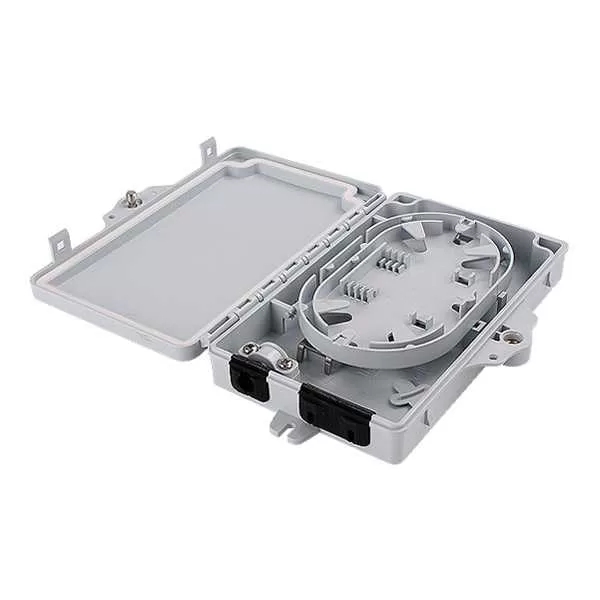
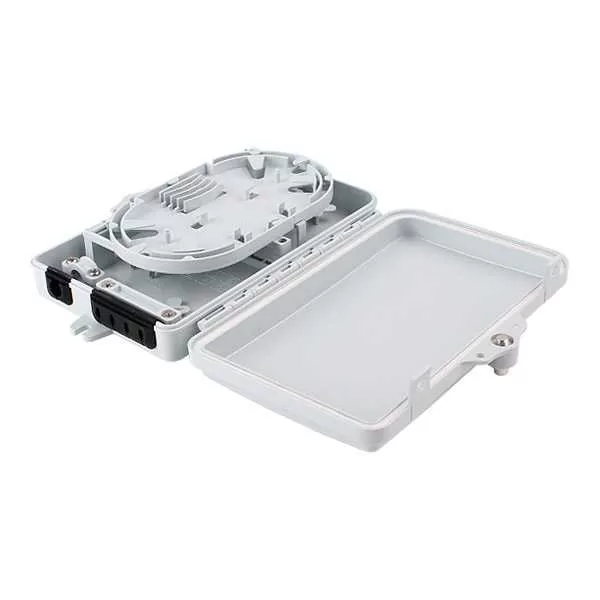
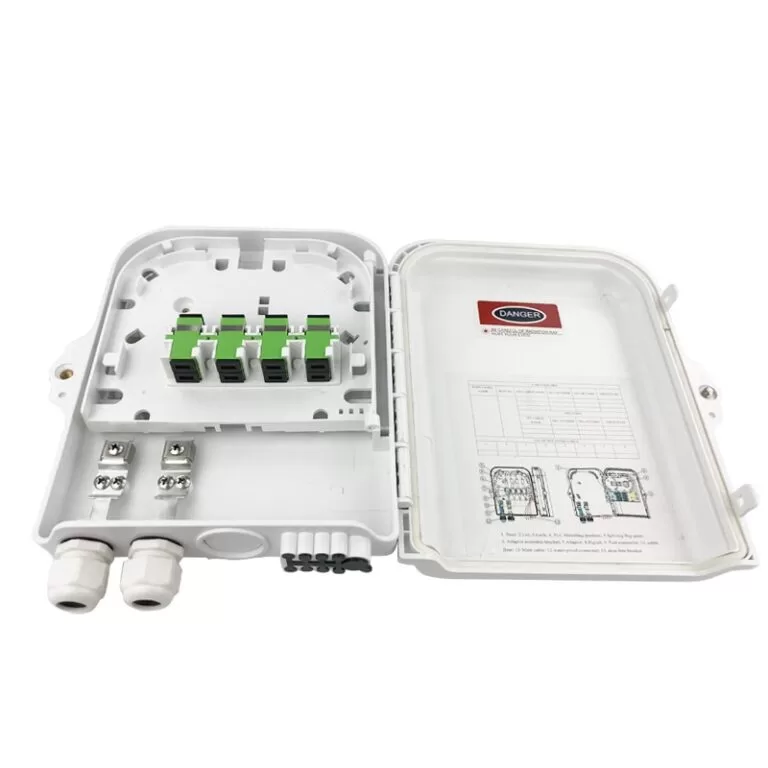
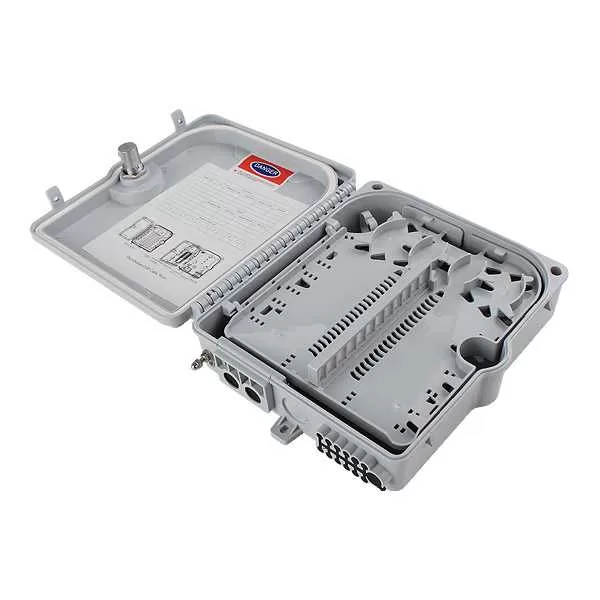
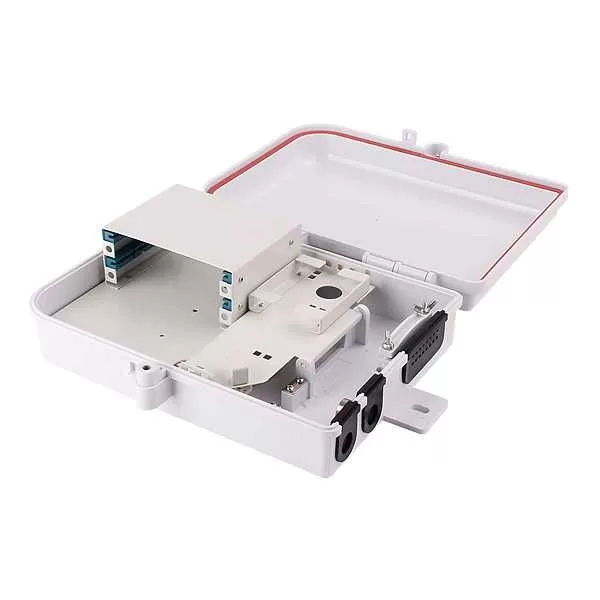
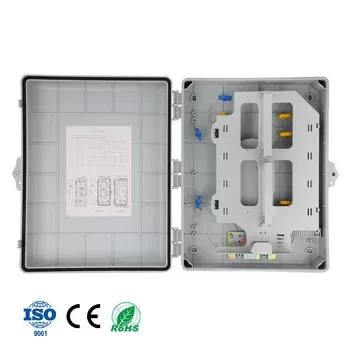
Here is a detailed comparison of the different port counts of wall-mounted fiber optic distribution boxes, with a focus on the benefits and drawbacks of each port count:
| Port count | Benefits | Drawbacks |
|---|---|---|
| 2 port | Ideal for small networks with only a few fiber optic cables; inexpensive; easy to install and maintain | May not have enough ports for larger networks; may not have the features that you need, such as cable management or splicing trays |
| 4 port | Good option for medium-sized networks with a few to several fiber optic cables; more affordable than higher-port-count boxes; easier to install and maintain than higher-port-count boxes | May not have enough ports for larger networks; may not have the features that you need, such as cable management or splicing trays |
| 6 port | Good option for medium-sized networks with several fiber optic cables; more versatile than 2-port and 4-port boxes; more affordable than higher-port-count boxes | May not have enough ports for larger networks; may not have the features that you need, such as cable management or splicing trays |
| 8 port | Good option for medium-sized to large networks with several to many fiber optic cables; more versatile than 2-port, 4-port, and 6-port boxes; more affordable than higher-port-count boxes | May not have enough ports for very large networks; may not have the features that you need, such as cable management or splicing trays |
| 12 port | Good option for large networks with many fiber optic cables; more versatile than 2-port, 4-port, 6-port, and 8-port boxes; may have more features than lower-port-count boxes, such as cable management or splicing trays | May be too large for small networks; may be more expensive than lower-port-count boxes |
| 24 port | Good option for large networks with many fiber optic cables; more versatile than 2-port, 4-port, 6-port, 8-port, and 12-port boxes; may have more features than lower-port-count boxes, such as cable management or splicing trays | May be too large for small and medium-sized networks; may be more expensive than lower-port-count boxes |
| 48 port | Good option for very large networks with many fiber optic cables; most versatile option; may have more features than lower-port-count boxes, such as cable management or splicing trays | May be too large for small, medium-sized, and large networks; may be more expensive than lower-port-count boxes |
| 72 port | Good option for very large networks with many fiber optic cables; most versatile option; may have more features than lower-port-count boxes, such as cable management or splicing trays | May be too large for small, medium-sized, and large networks; may be more expensive than lower-port-count boxes |
Benefits of using a wall-mounted fiber optic distribution box:
- Space-saving: Wall-mounted FODBs save space in your indoor environment.
- Easy installation and maintenance: Wall-mounted FODBs are designed to be easy to install and maintain.
- Protection: Wall-mounted FODBs protect your fiber optic cables from damage.
- Flexibility: Wall-mounted FODBs can be used in a variety of applications, including residential, commercial, and data center networks.
- Scalability: Wall-mounted FODBs are scalable, meaning that they can be expanded to accommodate more fiber optic cables in the future.
Choosing the right wall-mounted fiber optic distribution box
When choosing a wall-mounted fiber optic distribution box, there are a few factors to keep in mind:
- The number of ports you need: Wall-mounted FODBs are available with a variety of port counts, so choose one that has the right number of ports for your needs.
- The type of fiber optic cables you are using: Some wall-mounted FODBs are designed for specific types of fiber optic cables, such as single-mode or multimode cables. Make sure to choose a wall-mounted FODB that is compatible with the type of fiber optic cables you are using.
- The features you need: Some wall-mounted FODBs come with additional features, such as cable management or splicing trays. Consider the features you need and choose a wall-mounted FODB that has them.
- Your budget: Wall-mounted FODBs can range in price from a few hundred dollars to several thousand dollars. Choose a wall-mounted FODB that fits your budget.
Conclusion
When choosing a wall-mounted fiber optic distribution box, it is important to consider the size and complexity of your network, the number of fiber optic cables that you need to terminate and distribute, the type of fiber optic cables that you are using, the mounting location of the distribution box, and the budget that you have available.
FiberCheap offers a wide variety of FODBs to choose from, including wall-mounted FODBs, rack-mounted FODBs, and outdoor FODBs. FiberCheap’s FODBs are available with a variety of port counts, so you can choose the one that is right for your needs.
FiberCheap’s FODBs are made of high-quality materials and are designed to last. They are also backed by a warranty, so you can be sure that you are getting a quality product.
If you are looking for a reliable and affordable supplier of fiber optic distribution boxes, FiberCheap is a great option to consider.
